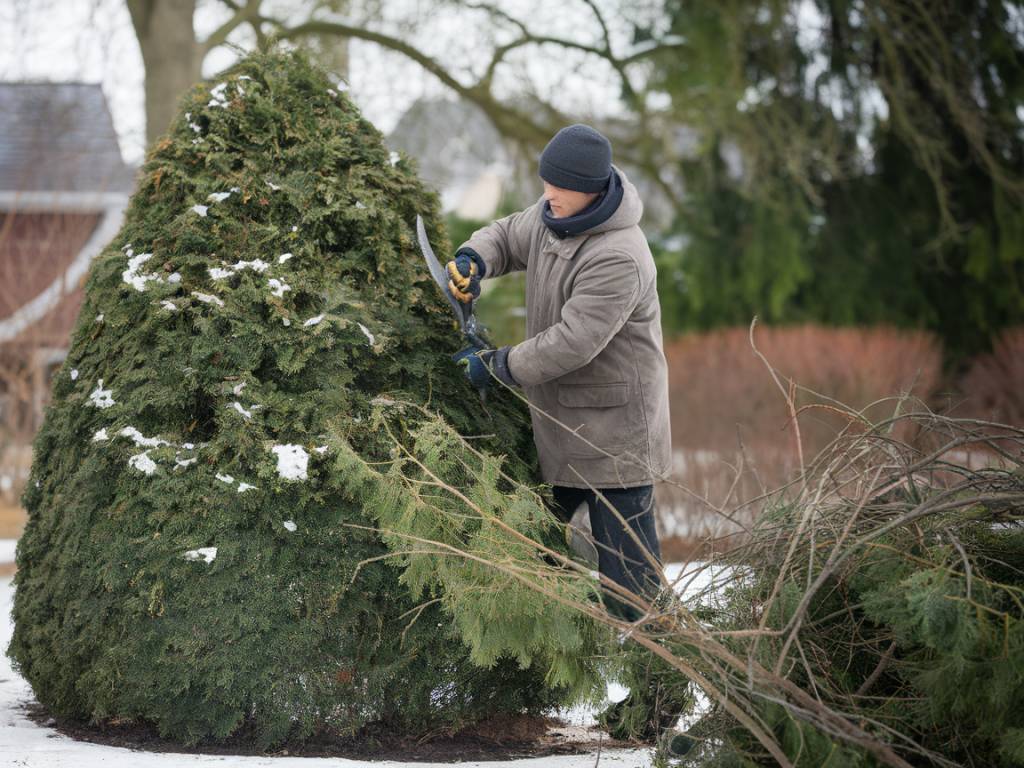Winter is coming, and it’s the perfect time to start preparing your garden hedges for the cold months ahead. Hedges can provide excellent windbreaks, privacy, and aesthetic appeal but to ensure they withstand winter weather, they need a bit of tidying up. I find that pruning and shaping your hedges not only keeps them healthy but also creates a beautiful, structured look in your garden. Here’s how I go about it.
Why Prune Your Hedges Before Winter?
First and foremost, pruning your hedges before winter helps eliminate dead or diseased branches that can become more problematic in cold, wet conditions. These weak branches are more susceptible to breaking under the weight of snow or ice, potentially damaging the plant further.
Pruning is also crucial for maintaining the shape and density of your hedge. Well-maintained hedges act as better windbreaks and insulation barriers, protecting your garden and even your home from harsh winds.
Assess Before You Cut
I always start by taking a good look at my hedges from different angles. This helps me identify any areas that need more attention. I look for dead wood, crossed branches, or any evidence of disease. It’s also a great opportunity to decide on the overall shape I’m aiming for.
Here’s a quick assessment checklist to guide you:
- Look for diseased or dead branches.
- Identify crossed branches that could rub and cause wounds.
- Note uneven growth patterns that need correction.
- Decide on the desired shape for your hedge.
The Right Tools for Pruning and Shaping
Having the right tools makes all the difference. For smaller hedges, I find that hand shears and loppers work perfectly. For larger, more established hedges, a pair of hedge trimmers can save a lot of time and effort.
- Hand Shears: Ideal for precision work and small hedges.
- Loppers: Useful for cutting thicker branches.
- Hedge Trimmers: Best for large hedges that require extensive shaping.
- Gloves: Essential to protect your hands from thorns and irritants.
Techniques for Effective Pruning
I always follow specific techniques to ensure my hedges are pruned correctly, which helps them flourish and stay healthy throughout winter.
Top-to-Bottom Trimming
I start pruning from the top of the hedge and work my way down. This method prevents the debris from falling onto the lower branches and allows for a cleaner cut.
Angled Cuts
I make angled cuts to ensure that rainwater runs off the branches. This helps avoid water accumulation that can freeze and cause breakage or disease.
Shape Decisions
Deciding on the shape of your hedge can be both functional and aesthetic. I prefer a slight taper, wider at the base and narrower at the top. This shape allows sunlight to reach the lower branches, promoting more uniform growth.
Addressing Common Issues
If you come across sections of your hedge that look particularly dense, I recommend thinning them out. This involves selectively cutting out some branches to improve air circulation. Better airflow reduces the risk of fungal diseases, which can be a problem in damp, cold weather.
Also, if you notice any patches where the foliage is sparse, don’t worry. These areas can often fill in once spring arrives and new growth begins. However, a balanced fertilizing routine can aid in quicker recovery and healthier growth.
Post-Pruning Care
Once the pruning is done, it’s crucial to clean up the area. I rake up any fallen leaves and branches to prevent potential disease from spreading. Composting these cuttings is an excellent way to recycle nutrients back into your garden.
Mulching around the base of your hedges can also provide added protection during winter. I use organic mulch to help insulate the roots and retain moisture. Over time, this mulch breaks down and further enriches the soil.
Long-Term Hedge Maintenance
Winter pruning is just one part of year-round hedge maintenance. I also keep an eye on my hedges throughout the growing season. Regular trimming helps maintain their shape and encourages denser growth, which acts as a better barrier against winter winds.
I also practice integrated pest management by using natural predators and organic treatments to keep pests at bay. Healthy hedges are less likely to succumb to diseases and pests, making them more resilient to winter conditions.
Permaculture Principles
When it comes to maintaining a natural garden, permaculture principles can be incredibly useful. I strive to work with nature rather than against it. This means selecting hedge plants that are well-suited to the local climate and soil conditions. Native plants often require less maintenance and are more resilient to local pests and diseases.
Another principle I follow is creating diverse ecosystems. By planting different species alongside my hedges, I attract beneficial insects and improve overall biodiversity. This holistic approach ensures a healthier and more balanced garden.
Finally, I incorporate water-conservation practices such as rainwater harvesting and using drip irrigation systems. These methods not only save water but also ensure that my hedges receive consistent moisture levels, promoting robust growth.
So there you have it. By following these steps and principles, you can prepare your hedges for winter and keep them healthy and thriving year-round. Happy gardening!
Samanta
